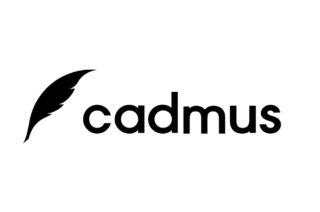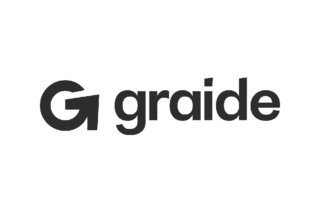How can you use formative feedback to help your students?

Giving our students feedback can have a profound impact on how they learn and how they feel about their studies. It is arguably one of the most important things we can do to help our students improve their performance in summative assessment (Broadfoot & Black 2004).
Yet it is easy to brush past the practical logistics of providing effective feedback, or become disheartened when the considerable effort spent producing feedback has seemingly little impact. This article pulls together some useful ideas and tools for implementing formative feedback in your teaching.
Why is feedback important for learning?
If I had to reduce all of the research on feedback into one simple overarching idea, at least for all academic subjects in school, it would be this: feedback should cause thinking.
(Dylan Wiliam, 2011)
Encouraging our students to put their knowledge into practice is significantly more valuable to their learning than rote tasks such as note taking. Setting regular formative assessments is key to providing opportunities for students to test themselves and construct a deep understanding of what they are being taught. Feedback can often become synonymous with telling students their results from these assessments, yet for feedback to enhance learning it should be more than telling (Sadler 2010).
As teachers we need to move away from feedback-as-telling and consider the wider potential impact of our feedback. Effective feedback should be encouraging and instructional so that our students can become more effective learners and produce higher quality work.
This Factsheet: How students learn offers a great overview of the cognitive processes involved in learning and how this should inform our delivery of effective feedback. There are also two videos available that summarise the research on effective feedback.
What constitutes good feedback?
Considering what constitutes good feedback begins with putting ourselves in our students’ shoes. From a teacher’s perspective, it is easy to quickly identify the quality of a piece of work and understand how it compares to the broad spectrum of work that has been marked over the years. Yet how to convey that information in a format that is not only easily parsed by the student, but also provides them with a valuable learning opportunity, is not so easily done. Students can often struggle to decode the feedback they receive, having not yet established the tacit knowledge required. Sadler gives us this example to illustrate (Sadler 2010);
For instance, a teacher may annotate a section with the comment: ‘This does not follow logically from what goes before’. A student who does not see any problem with the logic cannot take any remedial action. On the other hand, to explain why the logic does not logically follow may require the equivalent of a paragraph or more of explanation, and the teacher either cannot afford the time to compose it or is unaware that it could be necessary. Either way, the opportunity to learn from the incident lapses.
Although by no means a straightforward task, it is feasible to modify our feedback delivery to assist our students in becoming self-regulated learners and actively construct their understanding through the feedback they receive.
Nicol and McFarlane-Dick have devised seven principles of good feedback practice as a tool teachers can use to use to analyse and improve their feedback practices (Nicol & Macfarlane-Dick, 2004).
Feedback should;
- Facilitate the development of self-assessment (reflection) in learning.
- Encourage teacher and peer dialogue around learning.
- Help clarify what good performance is (goals, criteria, expected standards).
- Provide opportunities to close the gap between current and desired performance.
- Deliver high quality information to students about their learning.
- Encourage positive motivational beliefs and self-esteem.
- Provide information to teachers that can be used to help shape the teaching.
This Factsheet: Principles of Effective Feedback gives another helpful checklist of things to remember when developing feedback.
What different ways can I incorporate formative feedback?
Some of the ways you can implement formative feedback into your course design are included below. It also may be useful to consider different modes of assessment prior to considering feedback; this article on How to devise affective assessment explores different assessment styles.
Using Canvas
There are several question types available in Canvas that are automatically marked. The Canvas Instructor Guide includes explanations of the different question types available to use. Multiple choice questions (MCQs) are a useful tool and can be written in such as way as to test critical thinking, not just knowledge recall. The guide Writing multiple choice questions – a handy guide walks through how to write a good MCQ test. When writing feedback for a formative MCQ assessment it is useful to consider pointers for why an answer is correct or not. You could also direct students to further reading material.
Classroom response
In contrast to the asynchronous nature of most feedback, classroom response technology enables teachers to provide feedback immediately. Engaging users during synchronous activities, whether that is online or in a physical classroom, can be a powerful way of students receiving feedback on their performance in real-time, albeit not usually on an individual basis. Students can immediately identify whether they are correct and how their peers have responded. The lecturer gets an immediate picture of class comprehension and can indicate what specifically needs to be revised either ‘in the room’ or through bolstering provision of learning materials.
This Factsheet: Classroom Response Systems considers the different software packages that can be used to gather answers and get feedback during a class using mobile devices or clickers. The University has a site license to use echo360 (formerly called Turningpoint).
Peer review
Purposeful peer assessment is heralded as a robust way of aiding our students with understanding the meaning of the feedback they receive (Sadler 2010). Forming feedback for their peers is cognitively more demanding than merely receiving feedback, but it is the process by which students mark their peers’ work that provides the significant learning opportunity. The task requires students to integrate knowledge of a mark scheme with the work in front of them, and to make complex judgments of an unfamiliar piece of work. This skill of identifying quality in turn improves self-evaluation and the ability to mine the value from their own received feedback.
This article about Planning Collaborative Activities includes some example peer assessment tasks.
Audio feedback
Delivering audio feedback has been found to be a highly successful method for communicating feedback to students (Ice et al., 2004). Students like audio feedback, noting it can feel more personable and help reinforce their sense of community. Ince and colleagues noticed it helped students discern nuance that can be lost when simply reading written feedback. There is some evidence to suggest it is also a much quicker method for the marker. Find a demonstration of how to use audio feedback in our How to add feedback in Turnitin guide.
Feedforward
The learning potential of feedback can sometimes be curtailed when a course is coming to an end, with limited time to implement feedback guidance following assessment. As such, ‘feedforward’ is a complimentary approach offering students future-facing guidance prior to assessments being set.
Colleagues from Geography explored one example of feedforward guidance through exploring the effectiveness of inter-cohort feedback. Students taking an assignment were provided with feedback given to the previous cohort. Consistently, there was an average increase in the grades achieved in those assignments, which may partly be attributed to inter-cohort feedback (Jeff Blackford, School of Environment and Development; as reported at the January 2013 Humanities eLearning Showcase).
The Department of Materials ran a project that used feed-forward principles and peer instruction methodologies to help students improve their understanding of summative marking criteria. Students were put into small groups where they were given three anonymised submissions from a previous cohort; the students worked independently to consider how they would mark each submission, they then came together to discuss their ideas. They were given a rubric (that would also be used for their own assessment) which they were asked to apply to the group submissions and agree on a mark. Finally, the “real” marks were revealed. Over 90% of the students that participated in this task felt the process had improved their understanding of the marking criteria before commencing on their own work (Gianpaolo Vignali, Department of Materials).
How will students use the feedback?
A key consideration across all modes of feedback (or feedforward) delivery is how the students are intended to use it once it reaches them. As Nicol & Macfarlane-Dick state, feedback should ‘provide opportunities to close the gap between current and desired performance’. In other words, feedback should be explicit in how it can help improve future work.
Furthermore, there are creative strategies we can use to disseminate feedback that encourages students to extract learning value from their feedback. For example, students can receive their feedback prior to receiving their grade.
If you would like to discuss implementing feedback or feedforward in your course, please book a virtual one-to-one session with someone from the eLearning team who would be happy to help.


